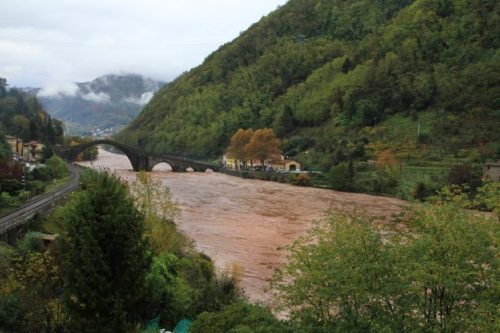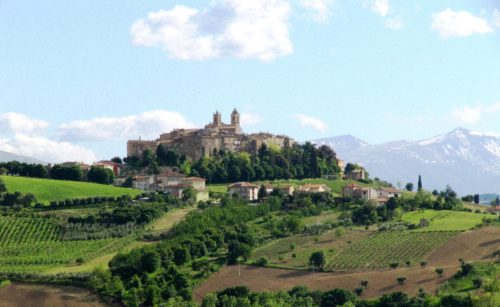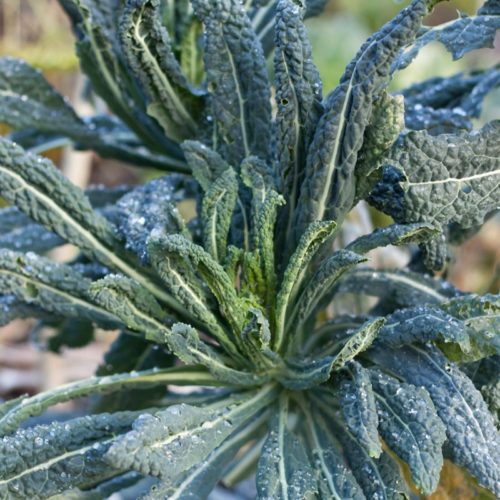From the mid 6th century, Italy experienced a climatic and demographic decline of ground swelling proportions. Harvests of grain still mattered, but the diet was mixed and reflected the new uphill settlement.

In the 5th to the 6th century, Italy experienced a series of catastrophes – the Gothic War, the climate events caused by the massive volcanic eruptions 536 – 541, and the Justinian plague, which led to a marked decrease in the population. Numbers vary, but a conservative estimate around eight mill individuals is in all probability much too high if we take into account the reduction of the number of settlements from Augustinian time to 550 CE. This has been evidenced by field-walking of 24 % of Tuscany, which has been carried out by medieval archaeologists from the University of Siena. With 2521 sites recorded from the 1st to the 3rd centuries, this number was reduced to a mere 201 sites in the period c. 550 to 600 CE; a situation in which more than 90 % of sites were wiped out during late Antiquity. Even though some of this reduction in numbers of sites reflects the character of building material – Roman (stone) versus Early Medieval (wood) – it fits well with other corresponding numbers from studies carried out in the region around the Lower and Middle Rhine. Somewhat an equivalent reduction has been estimated there, from 10,8 individuals per. km2 countryside in Roman times to 0,8 – 1 in Merovingian times (c. 550 – 600). Both these numbers – German as well as Italian – are based on the estimated size of the population in the countryside without taking into account the population in towns. The reduction indicates that numerous catastrophes took place, although most historians and archaeologists tend to swerve to the cautious side.
However, we do know how devastating the crisis in the Late Middle Ages was, and there is no reason to believe that this played out differently in the 6th century.
Perched on a Hilltop

In itself, it is not strange that the survivors of the 6th-century crisis moved to the hilltops. Of the Italian landscape 35 % must be characterised as mountainous; lying above 600 m amsl it cannot be cultivated. 43 % can be characterised as hilly, lying 300 – 600 asml, while only 22 % is characterised as plains. It stands to reason that if you are threatened by war, it makes sense to move up; particularly since the same plains seemed to be undergoing increased flooding in the same period. By building on a rocky plateau, marauders would have to fight from below, which is always a strategic challenge even if a settlement is not fenced or walled. Also, a rocky hilltop is per definition preserved from the landslides and erosions, which would occasionally hit the chalky slopes further down, when springs and small rivers would gain craft during a thaw. Such slopes would, on the other hand, be easy to work with hoes creating an infield/outfield situation with terraced orchards and gardens close to the village, well-hoed and fertilised fields below and finally ample access to forestland, wood, grazing, hunting and fishing. The utilisation of fields on the slopes below the village would offer varied access to the cultivation of plots with different microclimates. This was an entirely new way of utilising the landscape, which furnished a substantially different lifestyle from that which characterised the life of peasants in Late Antiquity. Thus, although the main elements of an advanced agrarian technology – the use of animal traction, (two and three-field) rotation of cultivations, and (wheel)ploughs – were known and implemented on Roman villas, their continued use in the early middle ages was in all likelihood not widespread. In the same way, as the settlements contracted and nucleated while shifting from the villas in the valleys to the hilltop villages, we must imagine the practicalities of farming changed from a market-oriented agrarian economy to one, which was primarily oriented towards subsistence. Thus, it is likely hoeing instead of ploughing became ubiquitous.
Changed Diet

More is there to be known, though. In the last 30 years, Italian archaeologists have worked tirelessly to excavate such hilltop villages to get a sense of life in the early middle ages. One of the more exciting avenues pursued has been studies of the ancient botany, as well as residue found in pots, pans, and the bones and teeth of people. What was their diet and what can it tell us about the lives they led?
To sum it up, theirs was a varied and nutritious diet. Basis continued to be naked wheat (71%) as it had been in Roman times. This is Italy, and they like their daily bread. However, barley (16 %) and oat (4.7 %) was also grown, but the last was probably mostly used as horse feed. However, two other sorts of grain appeared in the diet, emmer (4 %) and einkorn (3 %). They indicate the presence in the landscape of either Germanic migrants or inspiration from them. This was especially prevalent in the excavation at Miranduolo, where einkorn contributed 27 % of the grain, registered archaeologically. Rye, another “Germanic” cereal did not become part of the diet until the end of the 9th century. In the period from the 10th century to the 11th century, rye grew in importance until it contributed 35 % of the harvest. This was a significant shift. However, rye may also have been used to feed the growing flocks of horses in a dry and hot climate, in which where oats is notoriously difficult to grow.
To this diet of grain and – must we presume – bread, another stable, pulses, played a crucial role. This was a diet based on horse beans (65 %) grass peas (19 %) and common vetch (12 %). Finally, the role of millet should not be downplayed. It has been argued that the hard grains were primarily consumed in the hall of the lord, while the less nutritious sorts like millet were ubiquitous in the less wealthy household of the peasant.

The movement to the hilltops and the development of a more intensive infield/outfield agrarian structure apparently also reduced the need for animal traction. Hence, oxen were substituted by pigs, which could feed in the abundant forest lands provided in the depopulated Early Medieval landscape. It was not until the 13th century, that sheep and goats came to play a larger role.
This is also confirmed by the analysis of the residue in pots and pans, which demonstrated the presence of animal protein in soups, broths, and roasts. Fats from pigs were obviously prevalent. Another widespread form of residue identified as that of cabbage and kale; perhaps black cabbage (Nero de Toscana) as that which is still used in the Tuscan kitchen today. To this should in all likelihood be added the numerous wild herbs, which are still being sought after in the mountains of Toscana. Mentioned as important today are wild fennel, thyme, laurel, mint, and chives, as well as blueberries, elderberries and mushrooms. Although not witnessed too archaeologically, there is a good reason not to consider these wild greens and fruits as significant and tasty additives to an otherwise boring diet of soups. Cooked with cured ham, cabbage, onions, garlic, and broad beans, and served with course bread of maslin consisting of wheat, barley, and emmer this was the Early medieval staple.
As opposed to this, the remains of fish were scarce in the excavations, as well as in the analysis of the bones of people. Nor did chestnuts, olive oil and wine leave significant traces in the Early Medieval diet. In fact, these crops appear to have been introduced not earlier than the 9th and 10th century, following the manorialisation of the hilltop villages. Some traces thus indicate that the oil used for cooking in the villages before the 9th century came from other sources (flax or mustard), while wine was scarce. One reason was probably also that oil was a precious commodity used for lightening in churches and perhaps also in elite contexts. Olie oil, if harvested, was a precious commodity in the religious economy.
FEATURED PHOTO:
Digging the Garden at Poggibonsi © Archeodrome Poggibonsi.
SOURCES:
 Multiproxy approach to the study of Medieval food Habits in Tuscany (central Italy).
Multiproxy approach to the study of Medieval food Habits in Tuscany (central Italy).
By Mauro Paolo Buonincontri, Alessandra Pecci, Gaetano Di Pasquale, Paola Ricci and Carmine Lubritto
In: Archaeological and Anthropological Sciences (2016). pp 1–19
The Beginnings of Hilltop Villages in Early Medieval Tuscany
By Riccardo Francovich.
In: The Long Morning of Medieval Europe. New Directions in Early Medieval Studies. Ed. by Jennifer R. Davis and Michael McCormick Ashagate 2008 (Routledge 2016), pp. 55 – 82.
READ MORE:
